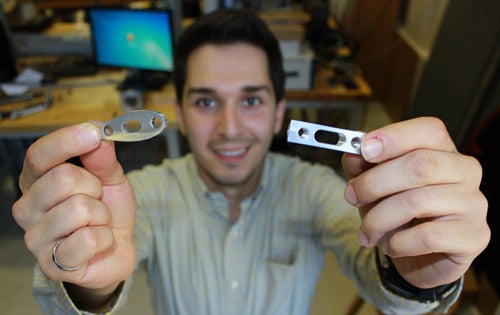A tight timeline was only fitting when engineers at the University of Waterloo took on a special project for the Canadian track cycling team headed to the Summer Olympics in Rio de Janeiro.
Lending their expertise in a world where winners and losers are typically decided by tiny fractions of a second, Professor John McPhee and research engineer Carin Yeghiazarian had just one week in June to produce a small but technically complex piece of hardware.
“It’s a very complicated 3D system,” said McPhee, a professor of systems design engineering and Canada Research Chair in system dynamics. “Obviously, we dropped everything else in the lab and just focused on this.”
Made of lightweight aluminum and shaped like a teardrop, their work connects the upper and lower handlebars on bikes used in team and individual pursuit events to make riders as aerodynamic as possible when they go into what is known as the praying mantis position.

Research engineer Carin Yeghiazarian shows off one of the two-piece aluminum handlebar connectors he helped produce for the Canadian track cycling team in time for the upcoming Olympics in Rio de Janeiro.